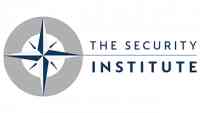Persistent political instability undermining a global rebound
Dragonfly has partnered with Aon to produce the Terrorism & Political Violence Risk Map by providing source data and expert analysis.
The annual Terrorism & Political Violence Map and its supporting analysis aims to provide a global overview of exposure to insurable political violence risks for businesses and their supply chains in 2021.
According to the two organisations, the coronavirus crisis both suppressed and aggravated terrorism and political violence risks in 2020. The percentage of countries exposed to terrorism and sabotage fell to 45 per cent - with surges in incidents mainly accompanying an easing of restrictions. As a result, terrorist attacks by both extreme-right and extreme-left actors fell overall worldwide. But extremists and activists from across the spectrum are evolving their narratives; the pandemic has been an opportunity to build support and challenge established orders and forms of governance through protests and violent direct action.
The report saw marked variances in the incidence of violent risks and conflicts in nearly every region. A rising tide of risk seems likely by 2022 as mass vaccinations and an easing of restrictions converge with the accumulated economic and political fallout of the pandemic.
The report found that political violence fell overall in 2020 but increased global unrest is likely by 2022 as mass vaccinations and easing of restrictions converge with the pandemic's accumulated economic and political fallout. It also claims that 60 per cent of countries globally are exposed to some form of civil unrest in 2021.
The risk level for the US is up to high for the first time ever, following four years at medium. Additionally, Dragonfly and Non say that Jihadist violence rose overall by 20 per cent in 2020. The majority of this activity was in conflict zones, such as Iraq, Syria, Afghanistan and Mali.
Henry Wilkinson, Chief Intelligence Officer at Dragonfly, said: “The pandemic is a long-tail risk that has created an artificial near-term global risk picture, particularly of political violence risks. The extraordinary measures to contain the pandemic have been suppressive but politically aggravating. A tide of risk by 2022 is likely as mass vaccinations and an easing of restrictions converge, with the accumulated economic and political fallout of the pandemic. The need for reliable and actionable data, intelligence and analysis to manage fluid and high impact global risk exposures while planning for recovery is critical.”
















